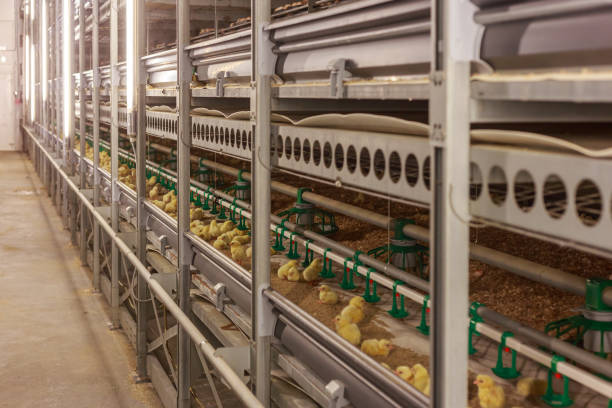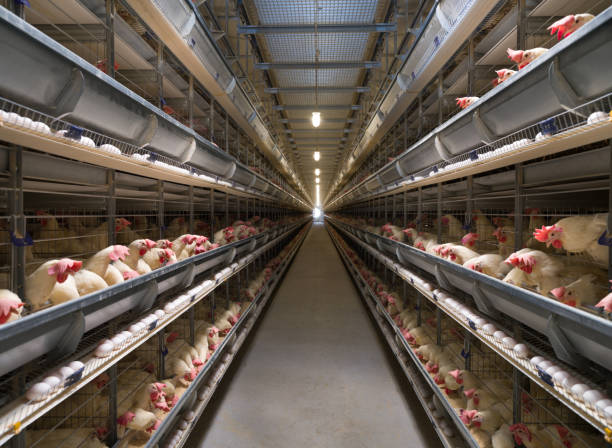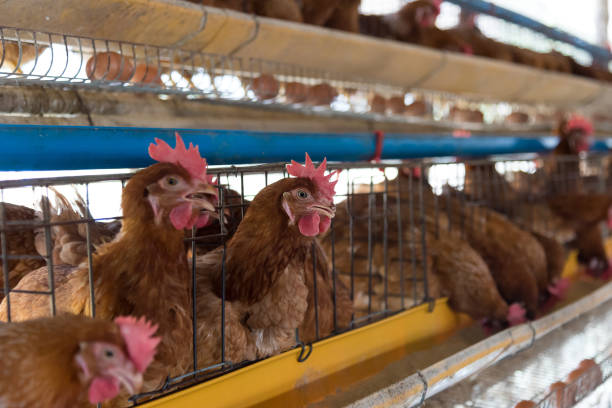
How to Start a Chicken Farm with Government Support
How to Start a Chicken Farm with Government Support
Starting a chicken farm can be a rewarding and profitable venture, especially when you’re able to take advantage of government support programs. Whether you’re an aspiring small-scale farmer or planning to launch a commercial poultry operation, knowing how to access financial aid, technical training, and infrastructure assistance can make all the difference. In many countries, including China, India, Nigeria, and several African and Southeast Asian nations, governments actively encourage poultry farming through subsidies, low-interest loans, training programs, and land allocation. This guide will walk you through the key steps to start a chicken farm with government backing—so you can build a sustainable, efficient, and profitable business from the ground up.
What Government Support Can You Expect?
Before diving into equipment and housing, it’s important to understand exactly what kind of help is available from your local or national government. The types of support vary by region but often include:
Subsidies on Equipment: Many agricultural departments offer partial or full reimbursement for purchasing modern poultry equipment like automatic feeders, water systems, ventilation fans, and egg collection trays. For example, in India, the Poultry Development Scheme covers up to 75% of cage system costs for small farmers.
Low-Cost Loans or Grants: Governments partner with banks or rural development funds to provide easy-access financing. These loans often come with reduced interest rates and longer repayment terms, making it easier for new farmers to get started without heavy upfront investment.
Free Training and Technical Assistance: Agricultural extension services frequently organize free workshops on best practices in biosecurity, vaccination schedules, feed formulation, and waste management. Some programs even assign field officers to mentor new farmers during their first production cycle.
Land Allocation or Lease Benefits: In certain regions, especially in developing countries, the government may offer free or heavily discounted land use rights for setting up poultry farms in designated agricultural zones.
Support for Hatcheries and Breeding Programs: If you’re looking to go beyond just raising chickens and want to produce chicks yourself, some governments subsidize hatchery construction and provide high-yield breeding stock at reduced prices.
To find out what’s available in your area, visit your local Ministry of Agriculture office, check official agricultural websites, or contact cooperatives and farming associations. Don’t assume nothing is available—many people miss out simply because they don’t ask.

Planning Your Chicken Farm with Efficiency in Mind
Once you’ve identified the support programs that apply to you, the next step is smart planning. A well-designed farm layout not only increases productivity but also helps meet the conditions required to qualify for government benefits.
Start by deciding what type of operation you want: broiler (meat) production, layer (egg-laying) hens, or a mixed farm. Each has different space, equipment, and management needs. For instance, layer farms require nesting boxes and egg conveyor belts, while broiler farms focus more on fast growth cycles and feeding efficiency.
Choose the right location carefully. Most government schemes require farms to be situated away from residential areas to minimize odor and disease transmission risks. Also consider access to clean water, electricity, roads, and proximity to markets or processing units.
When designing your housing system, prioritize animal welfare and ease of management. Modern cage systems—like those offered by Livi Machinery—are modular, durable, and designed to maximize stocking density while maintaining hygiene. They’re also compatible with automated feeding and drinking lines, which are often eligible for higher subsidy percentages due to increased labor savings and biosecurity.
Don’t forget about waste management. Governments increasingly require proper manure handling plans. Composting pits, biogas plants, or partnerships with nearby crop farms for fertilizer use can help you comply and even create additional income streams.
Make sure every part of your plan—from building size to breed selection—is documented clearly. This documentation will be essential when applying for grants or attending evaluation panels.
Using Modern Equipment to Maximize Output and Meet Standards
One of the most effective ways to boost efficiency—and impress government evaluators—is by investing in quality, modern poultry equipment. Automated systems aren’t just conveniences; they directly impact bird health, labor costs, and profitability.
For example, using an automatic feeding system ensures consistent daily nutrition without overfeeding or underfeeding. Timed delivery reduces feed waste and prevents aggression among birds during meal times. Similarly, nipple drinking systems keep water clean and reduce disease risk compared to open trays.
Climate control is another game-changer. High temperatures and poor air circulation cause heat stress, lower egg production, and increase mortality. Installing tunnel ventilation systems with cooling pads and automated controllers maintains ideal conditions year-round, especially during summer months.
Egg collection systems are critical for layer operations. With conveyor belts that gently move eggs to a central collection point, farmers save hours of manual labor each day and drastically reduce breakage. These systems are often highlighted in subsidy applications because they reflect a commitment to efficiency and product safety.
When selecting equipment, look for providers who offer complete turnkey solutions—including installation, training, and after-sales service. At Livi Machinery, we’ve helped hundreds of farmers across Africa, Asia, and South America set up fully functional farms that meet both production goals and regulatory standards. Our cages are rust-resistant, modular, and built to last over 15 years—even in humid tropical environments.
And here’s a pro tip: Apply for equipment subsidies before making purchases. Some programs reimburse only if the gear meets specific technical specs or comes from approved suppliers. Having this handled early avoids costly mistakes.
Next Steps? We Can Help You Get Started
Now that you know how to start a chicken farm with government support, the real journey begins—with action. Research your local programs, sketch out your farm plan, and connect with trusted suppliers who understand both farming challenges and funding requirements. Remember, success doesn’t come overnight, but with the right tools, knowledge, and support, your poultry business can grow steadily and sustainably.
If you’re ready to explore equipment options that align with subsidy criteria and fit your budget, let us help. We’ve supported farmers in over 40 countries with customized cage systems, incubators, and automation solutions tailored to small, medium, and large operations. Just leave your contact information below, and our team will send you a free farm setup guide, product catalog, and cost-saving tips based on your region. Whether you’re starting from scratch or upgrading an existing farm, we’re here to make it easier.
Frequently Asked Questions
Can I get a subsidy for used chicken farming equipment?
Most government subsidy programs only cover new equipment purchased from registered suppliers. Used gear usually doesn’t qualify, as authorities aim to promote modernization and standardization across farms.
Do I need prior experience to receive government support?
No, many programs specifically target beginners and youth entrepreneurs. In fact, some offer higher subsidy rates for first-time farmers or women-led ventures.
Is organic chicken farming better for getting grants?
Not necessarily, but eco-friendly or sustainable models—like free-range systems with manure recycling—often score extra points in grant evaluations. Check if green certifications bring added benefits.
How long does it take to get approval for poultry farming subsidies?

Processing times vary, but typically range from 4 to 12 weeks. Make sure your paperwork is complete and submitted during open application windows to avoid delays.
Can I apply for multiple types of support at once?
Yes, you can usually combine subsidies, loans, and training programs. However, keep accurate records so auditors can verify eligibility for each fund.
Are backyard chicken setups eligible for government aid?
Generally, support goes to semi-commercial or commercial farms above a minimum bird capacity (e.g., 500+ layers or 1,000+ broilers). Backyard projects may qualify for community-based programs but rarely receive direct financial aid.
Does the government provide chicks or feed?
Some state-run hatcheries distribute day-old chicks at subsidized rates, especially for popular breeds like Cobb 500 or ISA Brown. Feed is less commonly provided directly, but some cooperatives offer group purchase discounts.
What happens if my farm project fails after receiving funding?
Rules differ by program, but misuse of funds can lead to penalties. However, honest failures due to disease outbreaks or natural disasters are sometimes excused if reported promptly and backed by evidence.
Can foreigners start a chicken farm with government support?

This depends on national policies. In many countries, foreign investors can operate farms but may not be eligible for domestic subsidy schemes reserved for citizens or local residents.
How do I prove my farm qualifies for technical upgrades under subsidy rules?
You’ll need technical drawings, equipment invoices, manufacturer specifications, and sometimes performance reports. Working with experienced suppliers makes gathering these documents much easier.
